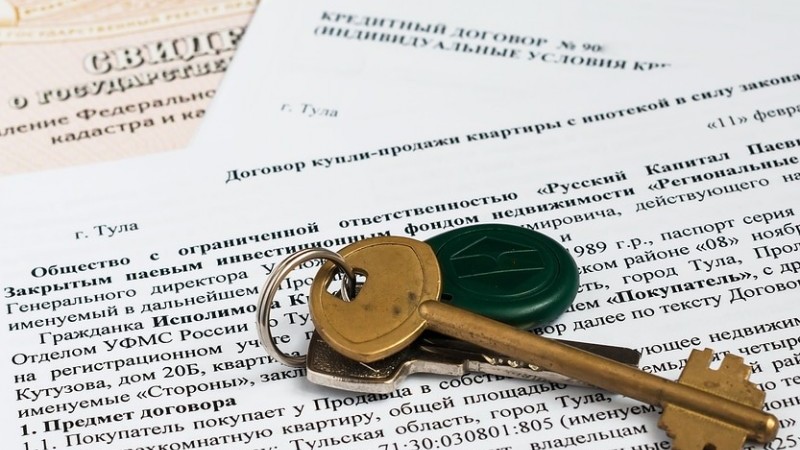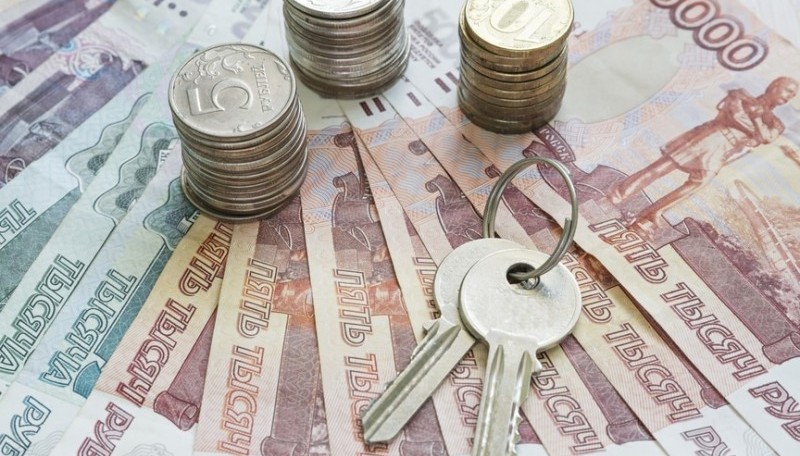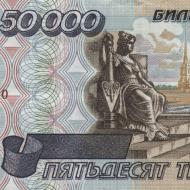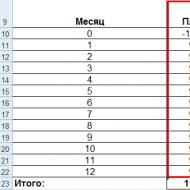
How much to pay on a mortgage
Mortgage lending is a type of loan that is issued by a bank secured by the real estate paid for by this loan. Such a loan is issued for a fixed purpose - when buying a house or, most often, an apartment. Simply put, a mortgage is such a target loan, upon registration of which the borrower, in case of non-payment, will lose the property that he wanted to purchase, and regardless of the share of the loan already paid to him.
To buy real estate, you can also get a regular targeted loan, but the amount issued under such conditions is very rarely commensurate with housing prices, especially with an average income level of the applicant. In addition, when applying for a mortgage, the apartment immediately becomes the property of the borrower (that is, the bank “buys” it for you) and all subsequent formal and financial procedures subsequently proceed between individuals. person and bank, without intermediaries.
Since a mortgage is in most cases the only way available for a modern person to buy a separate home, such lending programs are provided by almost all banks. There are many types of mortgages, a list of benefits, a list of special conditions, different payment schemes, but only one question is really important for the payer: how much to pay per month for a mortgage? The amount of the monthly premium depends on a number of factors, which are discussed in detail below.
Mortgage registration
Based on the fact that a mortgage is perhaps the most voluminous and long-term of loan agreements regularly concluded by banks, they have quite a lot of requirements for the applicant. From the main it is necessary to list the following:
- age from 18 or from 21 years, while at the end of the loan repayment period, the age of the applicant must also not exceed a certain mark (as a rule, this is about 70 years old);
- more than a year of officially proven work experience, at the same time, the loan applicant must work at the last place of employment for at least six months;
- applicant's income statement(some banks take into account side jobs and informal wages, others do not);
- certificate of the value of the acquired property.
As can be seen from this list, the main factors for accepting or rejecting a loan application are the age and solvency of the borrower. In the event that the bank is not confident in the applicant's ability to assume the obligation to pay, it may provide the option of issuing one or more guarantors. The guarantors share with the payer his debt obligations, but they themselves are not obliged to pay as long as the recipient of the loan copes with his payment regime.
Another important question - how much does it cost to get a mortgage? As a rule, this service is provided by the bank free of charge. You only need to remember that when concluding a real estate loan agreement, it is almost always necessary to make an impressive down payment in one payment. More on this later in the article.
Mortgage benefits
Mortgage lending is equally accessible to all groups and categories of citizens, however, how and how much to pay on a mortgage depends on whether the borrower has certain benefits or participates in government programs. The main opportunities to “lighten” the mortgage strap are:
- injection into an agreement with a bank of maternity capital(as a rule, with its help a large down payment is formed);
- participation in the mortgage lending program for military personnel in which part of the payments is borne by the state fund.
However, both of these methods involve a significant change in lifestyle, so before you give birth to children or go to serve for the sake of an apartment, you need to weigh everything properly.
What determines the amount of the monthly payment
So, we have come to the most pressing issue - what determines the amount of the future payment (which will be paid by the borrower on a monthly basis for several years of the contract period) and how to choose the optimal ratio of conditions for yourself?

There are only three such factors:
- Down payment, which, at the request of the bank, usually ranges from 10 to 30% of the value of the property. It is important to remember that the size of the initial payment affects how much interest per annum the mortgage that you draw up costs.
- Actually, mortgage interest rate. As a rule, banks designate the annual rate in the contract. In some cases it is fixed, in others it changes over time. More on this in the relevant section.
- Loan terms. When considering the term, the bank takes into account the age of the borrower and the guarantors attracted by him (if any).
Different banks offer different mortgage lending projects. However, the size of a bank often correlates with its financial risk policy. Small or young banks often offer favorable contract terms. This is attractive, but remember: the contract will be in force for many years, and it is the bank that buys your apartment, and not you yourself. Thus, if something happens to him, then housing will also be added to your financial difficulties.
Another important point - choice of lending currency. Mortgages in dollars and euros often have better interest rates. However, the example of the exchange rate jump in 2014 speaks for itself. After that, it became clear that the currency is a benefit, but the ruble is peace and stability in the size of the payment. Next, consider the above factors in order.
Initial payment
When issuing a mortgage loan, banks insist on making a down payment in the amount of from 10 to 30% of the property value. For the bank, this is the minimization of risks under your agreement, for you it is the opportunity to reduce the term of the loan, and hence the overpayment on it.
With an average housing cost of about 3-5 million rubles, the entry fee can vary from 500,000 to two million. As a rule, these are personal funds accumulated by the borrower. Banks rarely issue an additional loan for this purpose, since the mortgage itself is already a fairly heavy debt obligation.
Credit counselors always recommend making the highest possible down payment. The logic of such a step is simple: this is the payment of that part of the cost of the apartment, from which interest will not subsequently accrue. Thus, the higher the initial payment, the lower the subsequent monthly payment.
Interest rate
Mortgage interest rates currently fluctuate within 10 to 20 percent. The lower the rate, the lower the monthly payment and the lower the total overpayment for real estate upon closing the loan agreement. The choice of the smallest percentage seems obvious, however, there are some subtleties.

Banks always work for their own benefit, so the proposed interest rate is closely related to the down payment and the term of the loan. As a rule, at 10-12% per annum, a mortgage is issued for a period longer than 10 or even 15 years (so that the total interest overpayment is greater). The larger the first payment (that is, the smaller the amount eventually subject to credit), the higher the percentage of annual accrual.
Thus, even if you have an impressive down payment and are ready to close the loan relatively quickly (say, in 5 years), the bank will still try to squeeze the maximum out of you through an inflated interest rate. Therefore, when planning the total and monthly payments, pay attention not only to the rate, but also to the total amount of the overpayment.
Loan terms
Mortgage terms can be very different - from 5 to 50 years. The maximum term of a housing loan at Sberbank, for example, is 30 years. Such long-term debt imposes restrictions on the age of the borrower and guarantors, so if you are over 40, get ready for a number of rejections. On the other side, The longer the term, the lower the monthly payment.
When choosing a term, you need to very accurately assess your ability to pay throughout its entire length.
- First, if you choose the 20 or 30 year option because of the low rate and low payoff, then you need to be sure of your return for the entire duration, and this can be very difficult to predict.
- Secondly, many mortgage loans do not imply the possibility of early repayment, or the payer is penalized for such repayment. The banking system calculates the volume of its monetary transactions for many years ahead, so early closing of the loan is not good for it.
Choice of optimal lending conditions
So, after considering the main factors affecting the size of the monthly payment, and identifying some of the pitfalls of mortgage lending, we can designate the optimal ratio of the terms of such a loan for a person with an average income:

- Mortgage should be issued if your income allows you to pay the bank up to half of your monthly earnings (if the payment is 30,000, then you need to earn at least 60,000). Payments of more than half of the salary will very quickly make you regret taking out a loan, so it is better not to exceed this share.
- The down payment should be made as high as possible, so it is worth preparing financially for a loan - it is optimal to have 25-30% of the total value of the property on hand.
- Experts recommend choosing a loan term for about 10 years (most loans are taken for 7 years, and for a period of more than 15, overpayments reach double and triple values).
- Based on the "input" parameters - income, installment, term - you need to see how much the mortgage rate is now in different banks. As a rule, it is 12-15% per annum, and this can be considered the optimal size.
Based on the average salary of a citizen, the average total family income, prices for food, clothing and basic necessities, as well as considering current housing prices, we can conclude the following: when applying for a mortgage on a two-room apartment for a period of 10 years, you will have to pay about 40,000 rubles per month. With a mortgage agreement for a period of 15 years, subject to a down payment of 50%, the amount is reduced to 30,000 rubles per month.
















